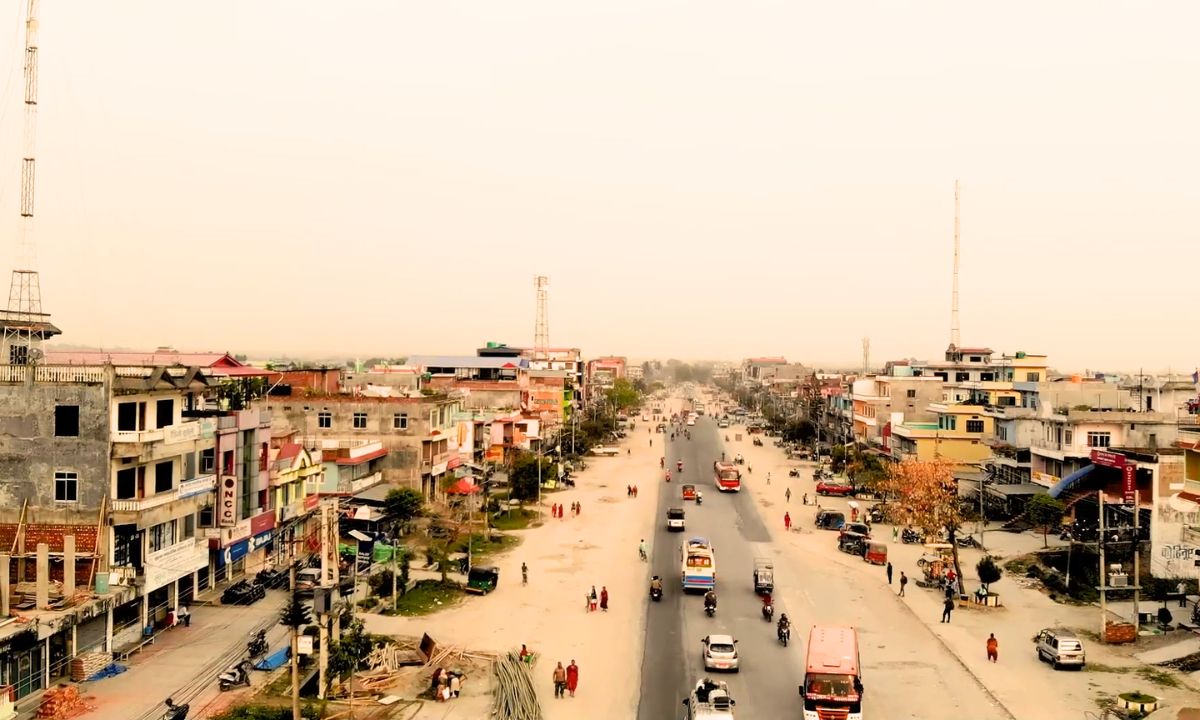Sundarharaicha Municipality is a local government unit in Morang District, Nepal. It was formed by merging the Sundardulari Municipality and Koshiharaincha Municipality, as per the Government of Nepal’s decision on Falgun 27, 2073 BS. The municipality consists of 12 wards, with its central office located in Biratchowk. It is situated 19 km from Biratnagar, the capital of Koshi Province.
- Total Households: 26,129
- Total Population: 116,377
- Average Family Size: 4.45
- Total Area: 110.16 sq. km
- Neighboring Boundaries:
- East: Belbari Municipality
- West: Itahari Sub-Metropolitan City
- North: Kerabari Rural Municipality
- South: Gramtham and Budiganga Rural Municipalities
- Latitude and Longitude: 26.62868, 87.34041
Tourist and Important Places
- BagJhoda Wetland
Located in Ward No. 10, this wetland spans approximately 7 bigha 5 katha 12 dhur, with an additional 10 bigha forest area in the north. Historically, tigers used to drink water from this wetland, leading to its name. It is accessible from Khorsane and is a significant natural attraction.

- Kichkagadhi Wetlands
Situated in Ward No. 1, Dagi Toll, this site is of historical, archaeological, and religious significance. It is believed to be the place where Kichchak was killed in the Mahabharata. A traditional worship festival and fair are held annually on Baisakh 14. Over time, the fort has been shrinking, and the reservoirs around it have dried up. - Hasina Wetlands
Spanning 49 hectares in Ward No. 5, Hasina Tol, this area consists of scrubland and small hillocks. It houses various religious sites, including Buddha Bihar, Buddha Pond, Budhasubba Temple, Nag Pond, Sakela Than, and Shivalaya Temple. The wetland is also home to diverse wildlife, such as wild boars, deer, rabbits, guinea fowls, and monkeys, making it a prime destination for religious and ecological tourism.

- New Brindaban Gaushala
Located in Ward No. 5, Budhikhola, this cowshed aims to promote religious tourism. Inspired by the sacred Brindavan of Lord Krishna’s era, it started with four acres of land and has now expanded to over seven bighas. The largest Radha Krishna temple in Nepal is under construction at this site.
Demographics
- Languages Spoken:
- Major languages include Nepali, Maithili, Tharu, and various indigenous languages spoken by ethnic communities.
- Ethnic Composition:
- The municipality is home to diverse communities, including Brahmin, Chhetri, Rai, Limbu, Magar, Tamang, Newar, and others.
- Religion:
- The population practices Hinduism, Buddhism, Islam, and Christianity, among other faiths.
Economic and Occupational Details
- Employment Sectors:
- Agriculture, trade, industry, foreign employment, and government jobs are major sources of income.
- Financial Status:
- Households with Bank Accounts: 74.32%
- Households with Loans: 51.44%
- Average Annual Income: Ranges from less than 50,000 to more than 500,000 NPR
- Average Annual Expenditure: Similar distribution as income levels
- Skilled Workforce:
- Many residents have skills in agriculture, construction, engineering, IT, tourism, hotel management, and healthcare.
Agriculture and Livestock
- Households Producing but Not Selling Agricultural Products: 20,202
- Households Producing and Selling Agricultural Products: 5,217
- Households Not Producing Agricultural Products: 710
- Households Raising Both Animals and Birds: 1,037
Education and Health
- Education Levels:
- From child development classes to Ph.D. levels, with many students pursuing science, engineering, medicine, humanities, and agriculture.
- Health Conditions:
- Major diseases include high blood pressure, diabetes, asthma, liver diseases, HIV, tuberculosis, and mental health issues.
- Disabilities: Vision impairment, hearing issues, autism, and other physical disabilities are recorded.
- Disability Support:
- Many individuals receive disability cards for government assistance.
Infrastructure and Utilities
- Drinking Water Sources:
- Household taps, tube wells, wells, deep boring, and jar water supply the municipality.
- Energy Sources for Cooking:
- Firewood, LPG gas, electricity, solar energy, and biogas are commonly used.
- Electricity Supply:
- The majority use electricity, while some rely on kerosene, solar, and biogas.
- Sanitation and Waste Management:
- Toilets range from public sewer connections to pit latrines and community toilets.
- Waste management involves municipal collection, garbage burning, and composting.
Housing and Infrastructure
- Types of Housing:
- RCC frame structures, steel buildings, brick-slate houses, and traditional mud houses.
- House Mapping Certificates:
- Many households lack official certification for building structures.
Governance and Administration
- People’s Representatives:
- Elected officials oversee the municipality’s governance and development.
- Municipal Officials:
- Kedar Prasad Guraigain – Mayor
- Akali Chaudhary – Deputy Mayor
Sundarharaicha Municipality is a diverse and growing region with significant cultural, historical, and ecological importance. With expanding infrastructure, economic opportunities, and tourism potential, it continues to develop as a vital part of Koshi Province.
Note: All the above data are sourced from the Municipality’s Website.


